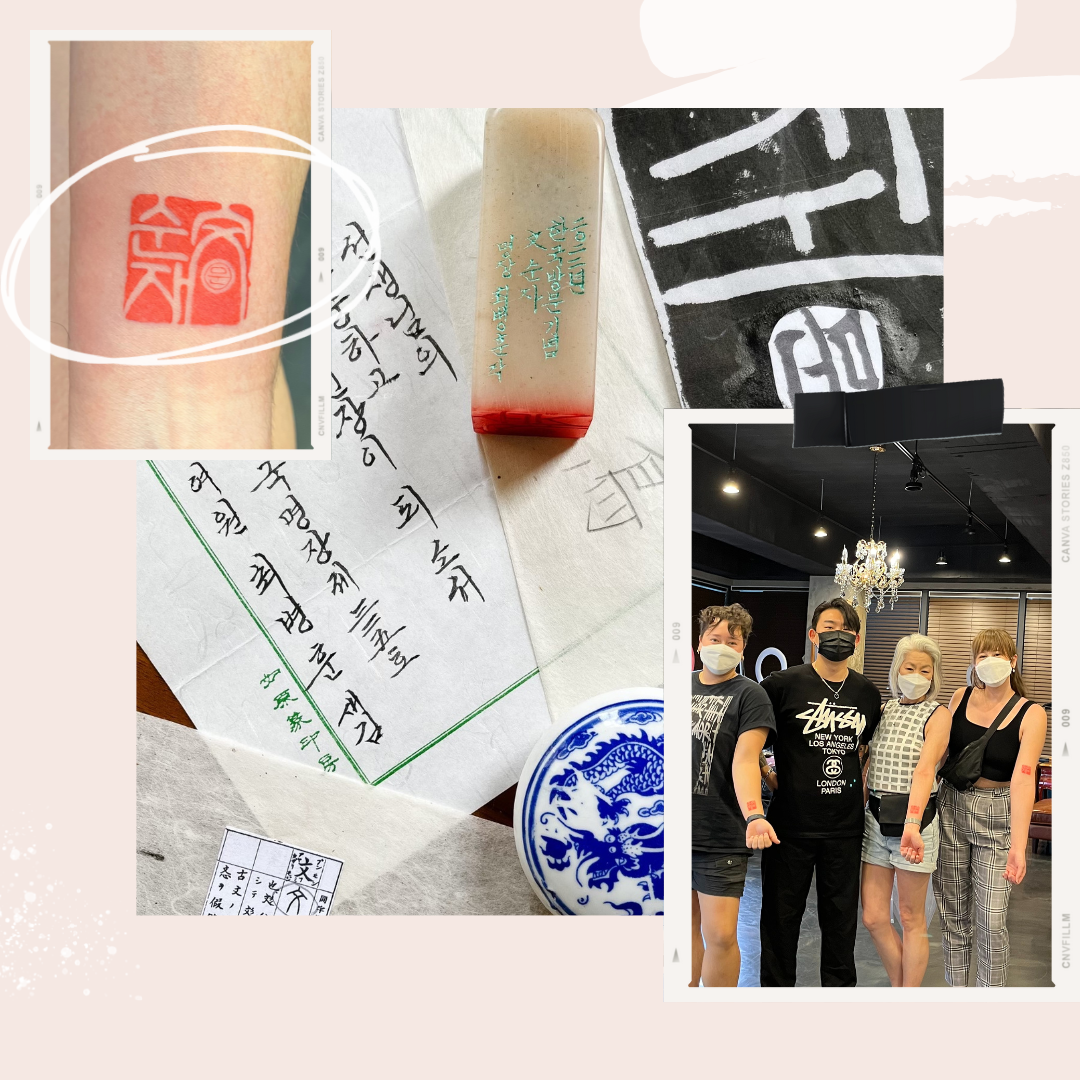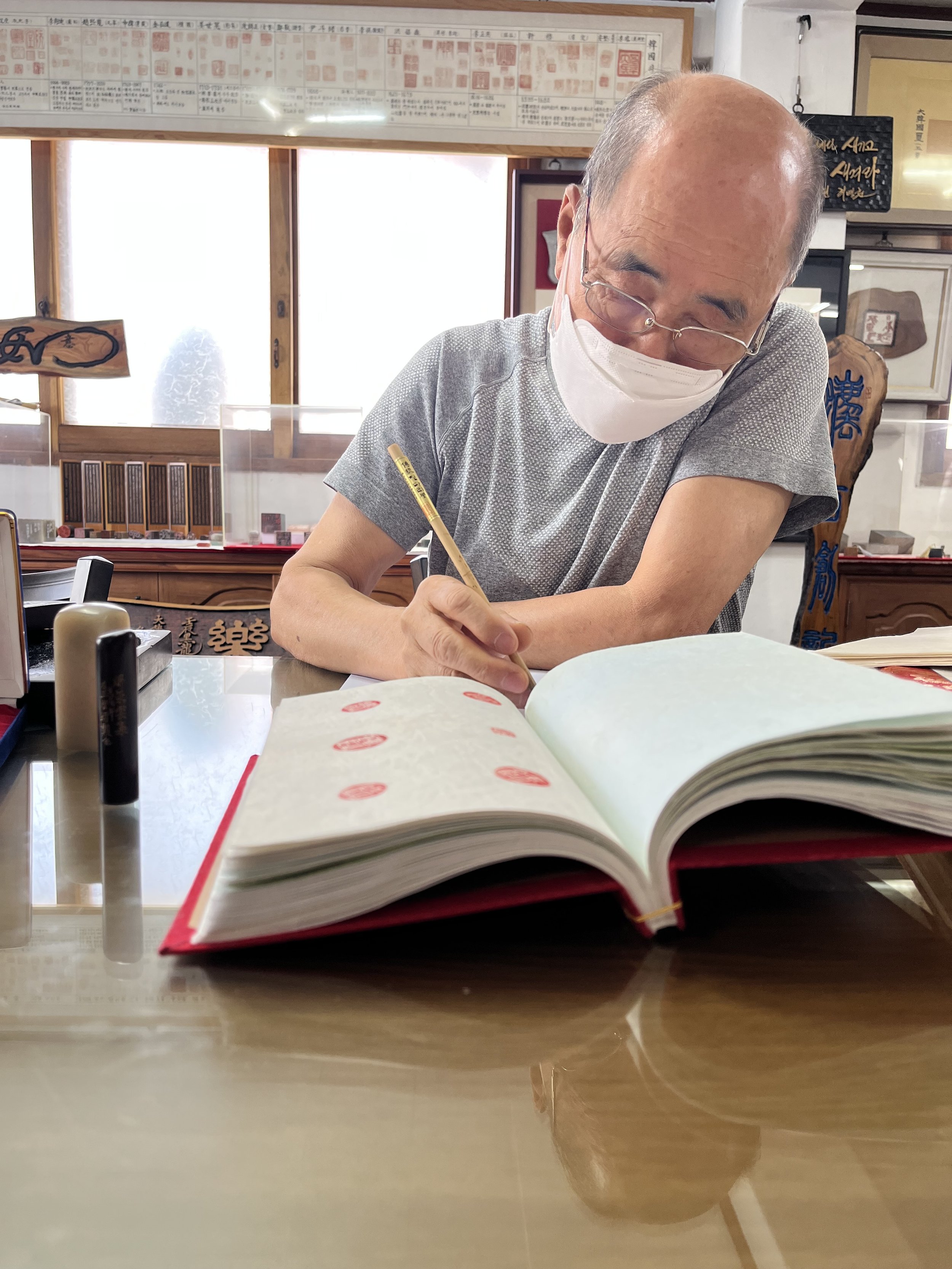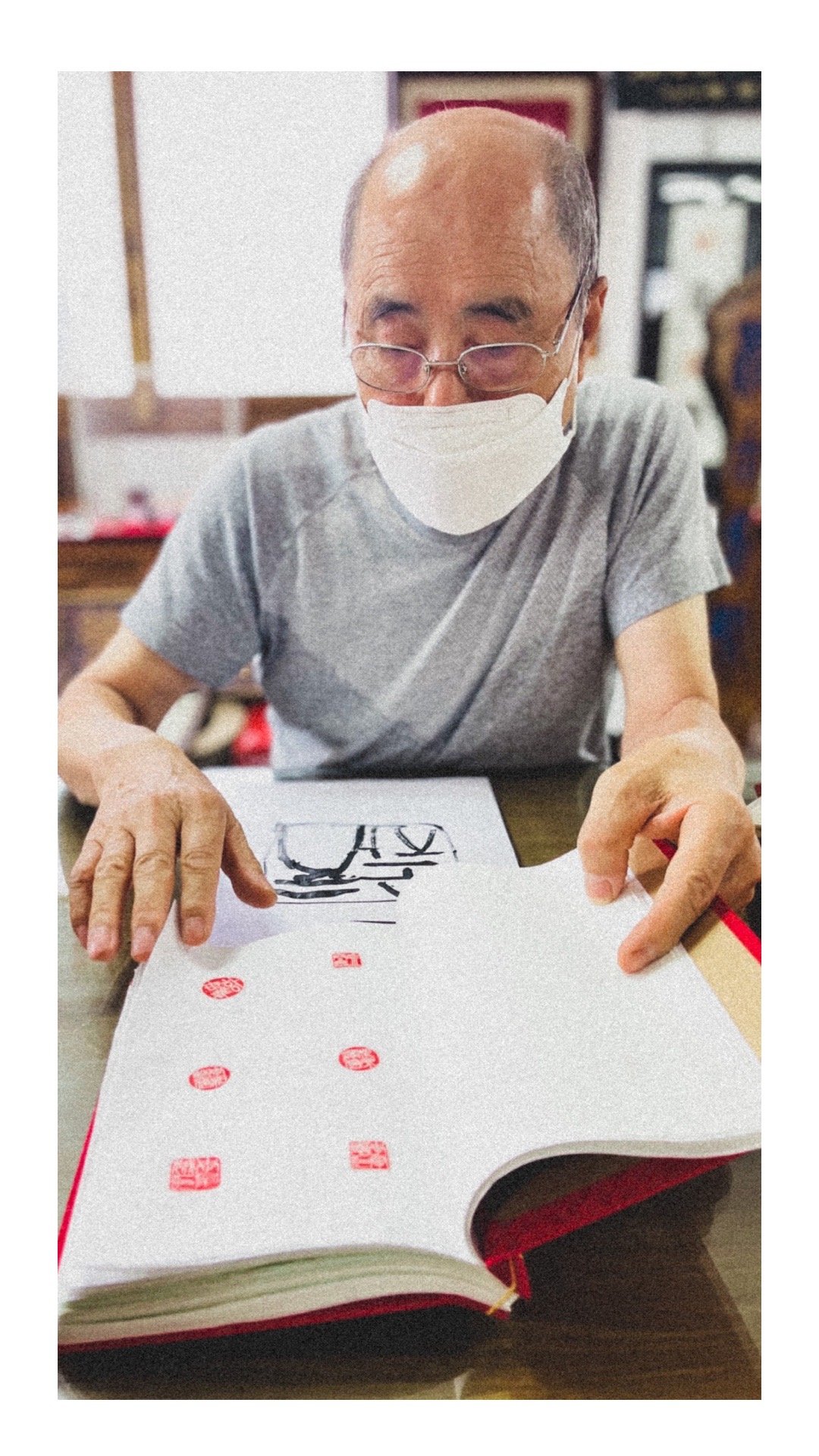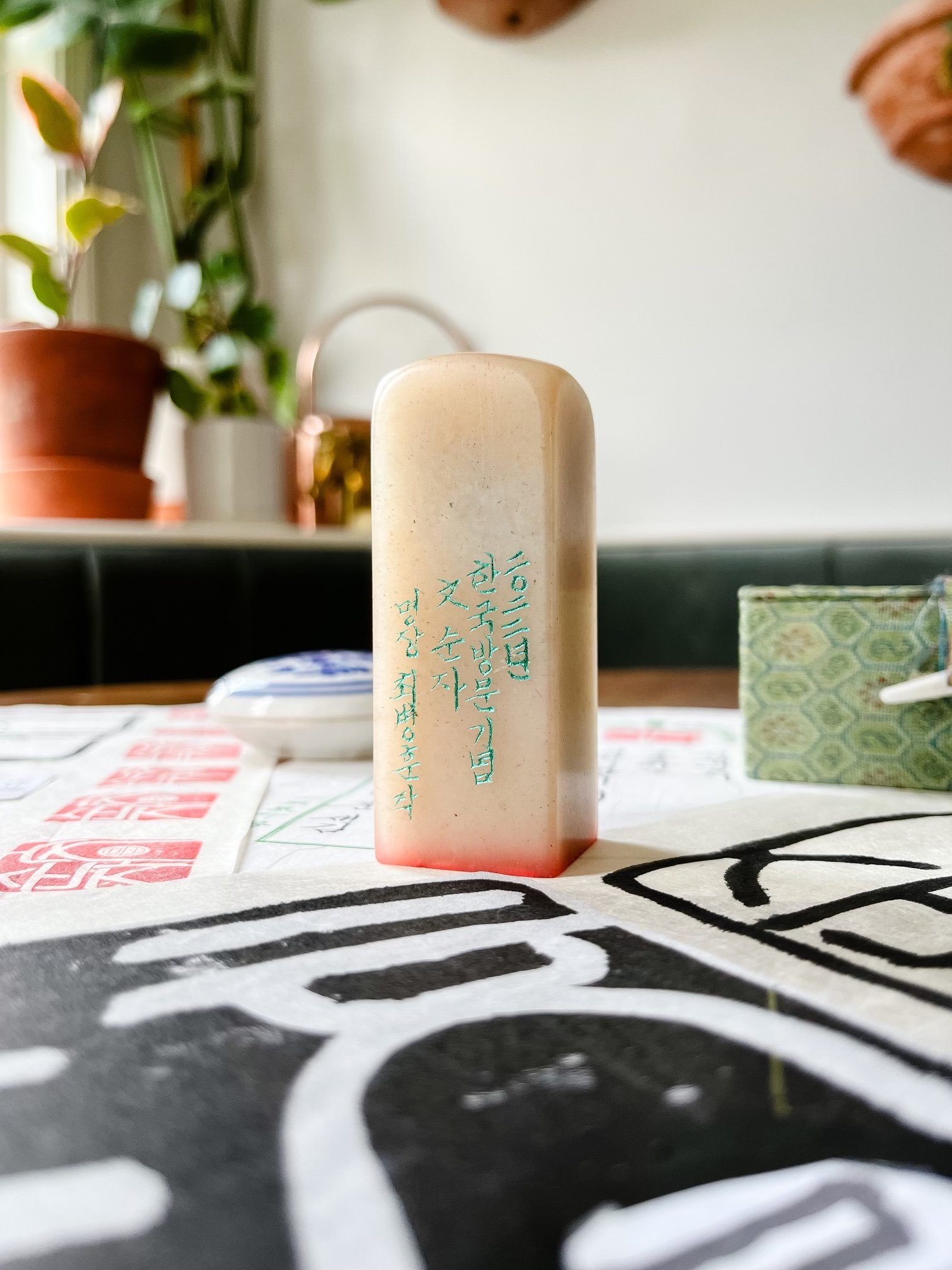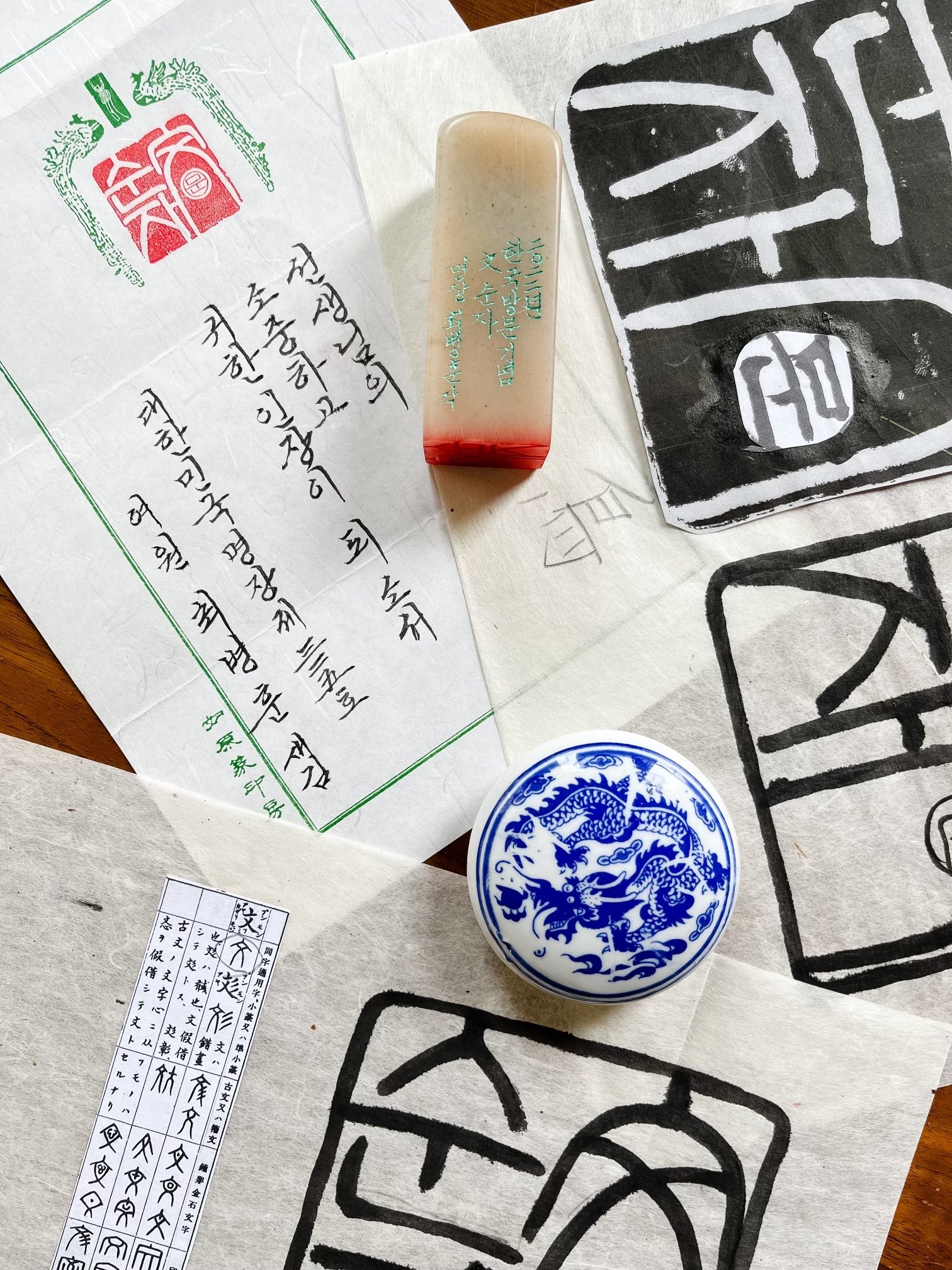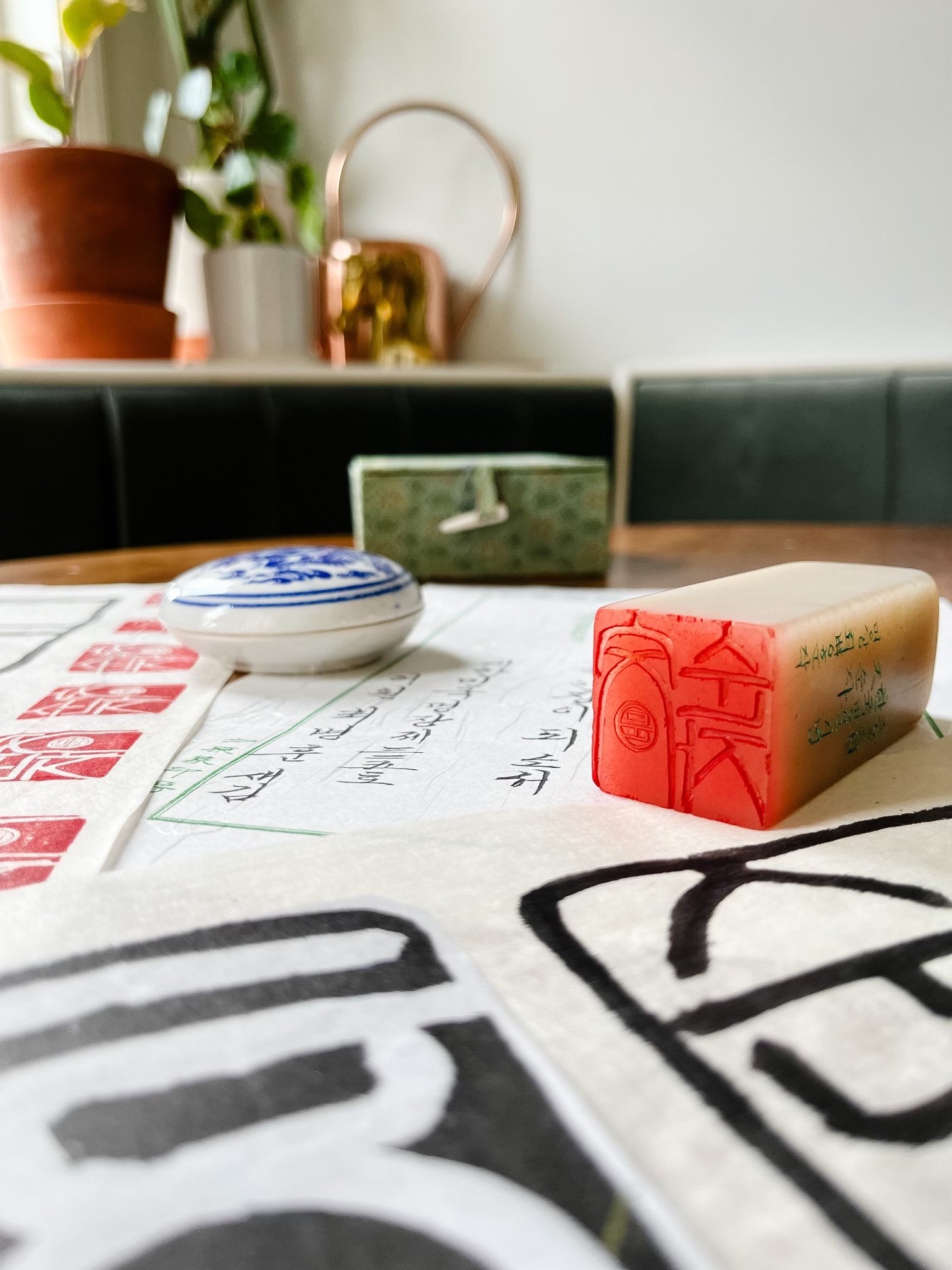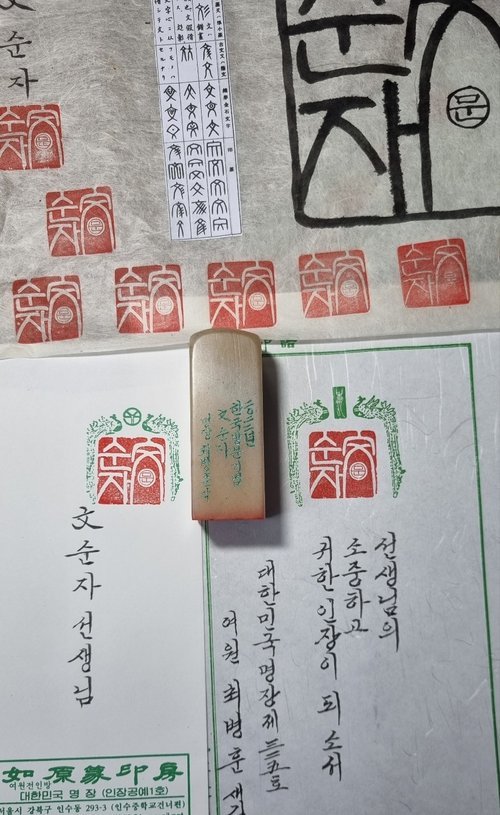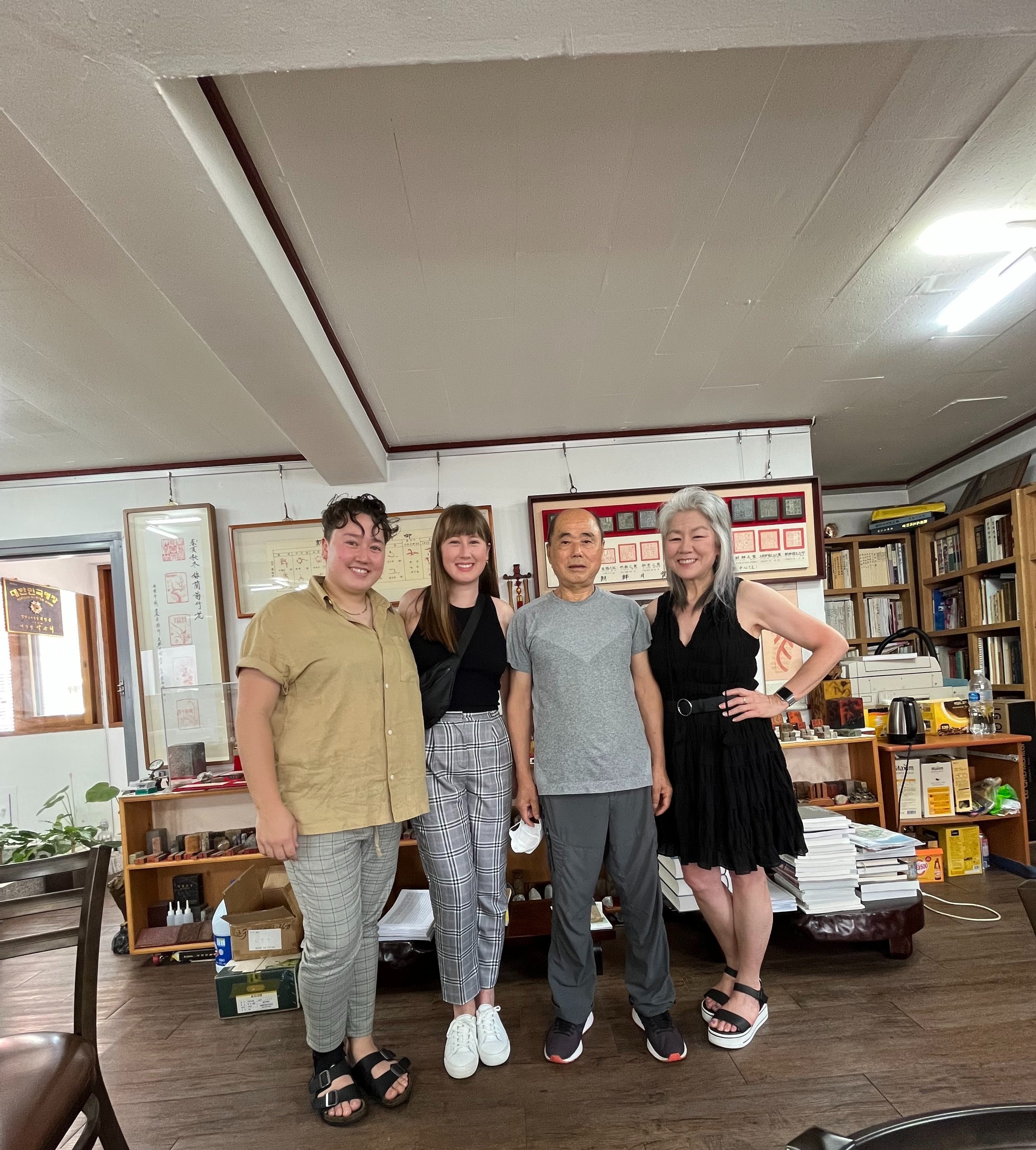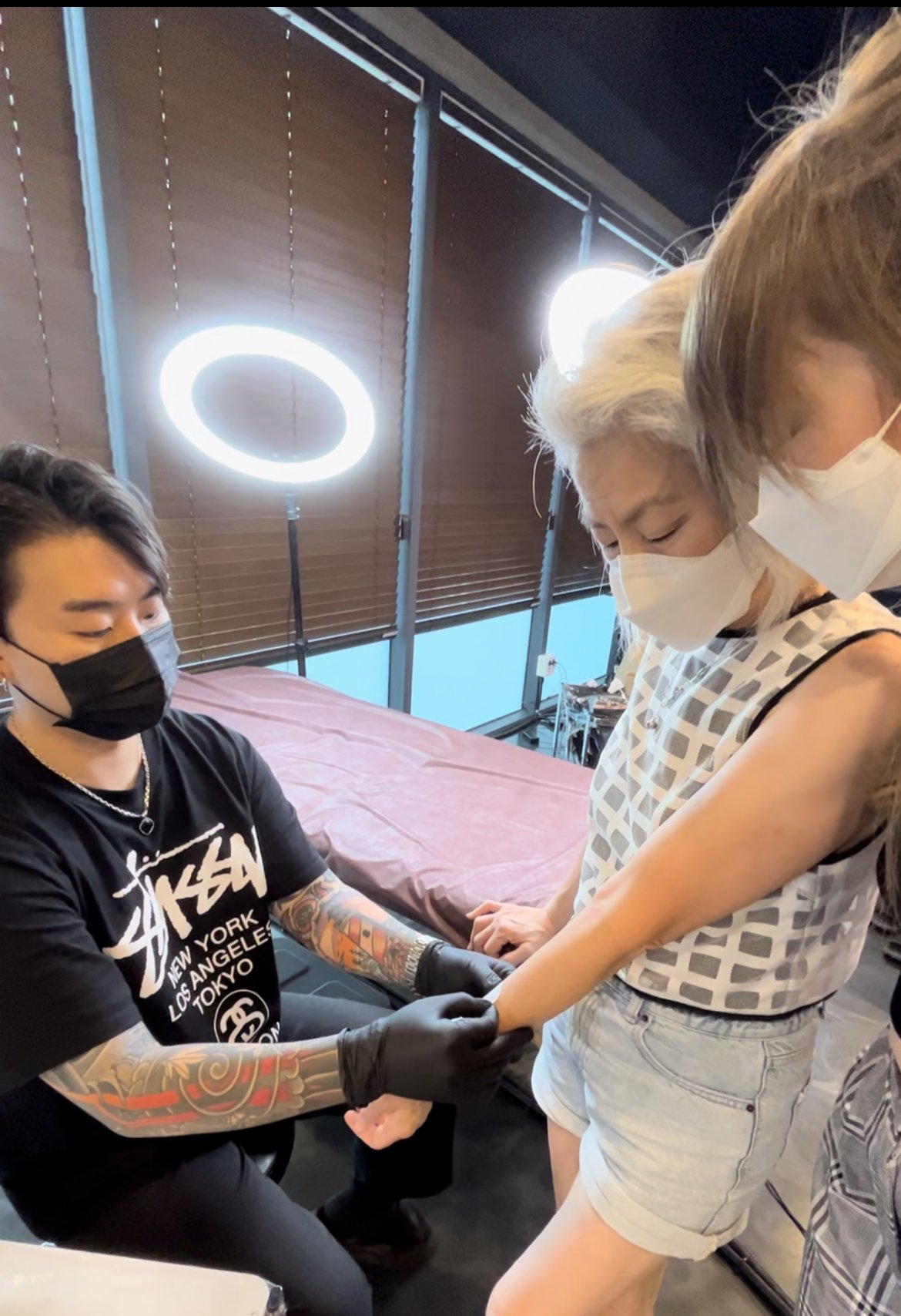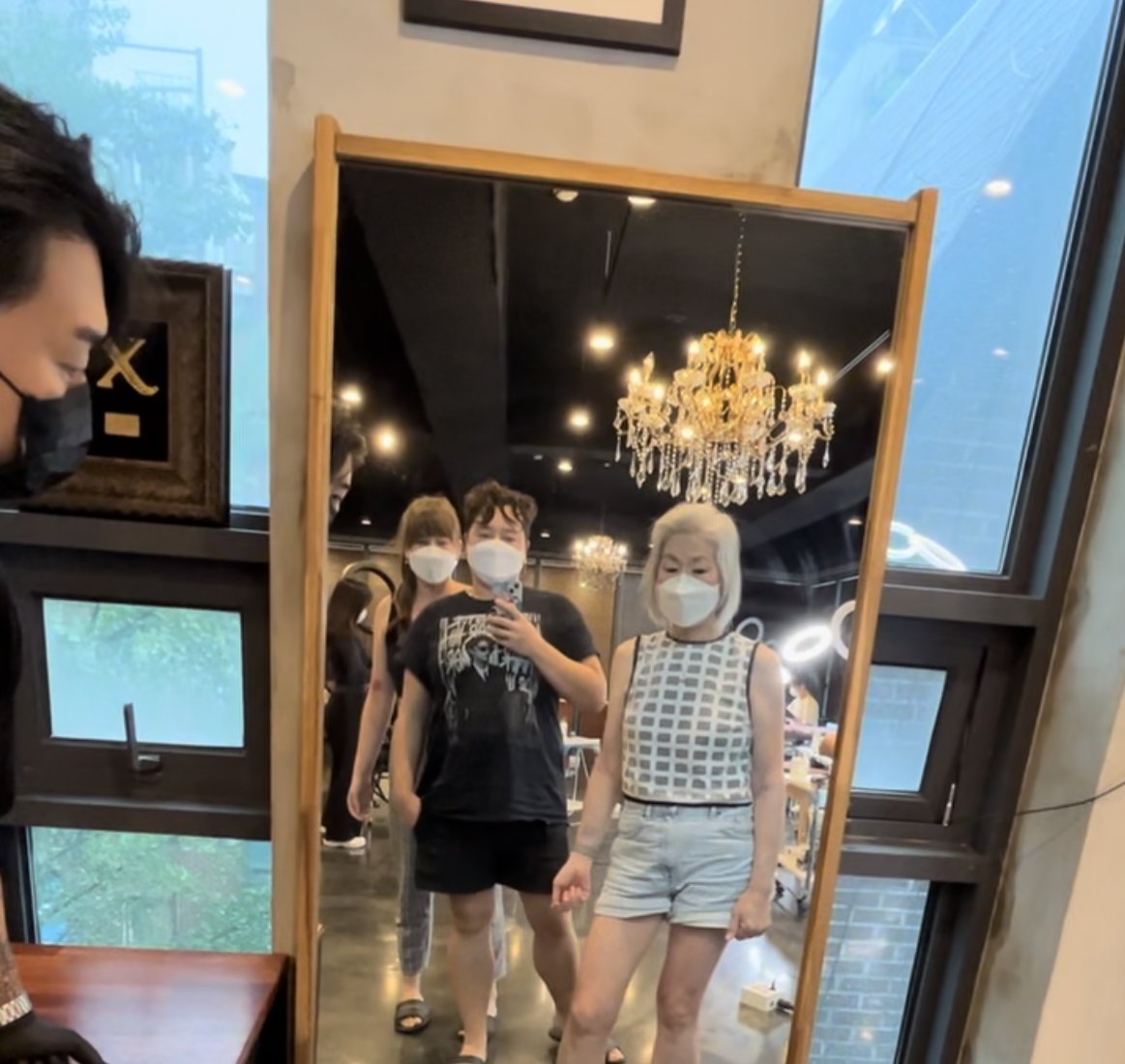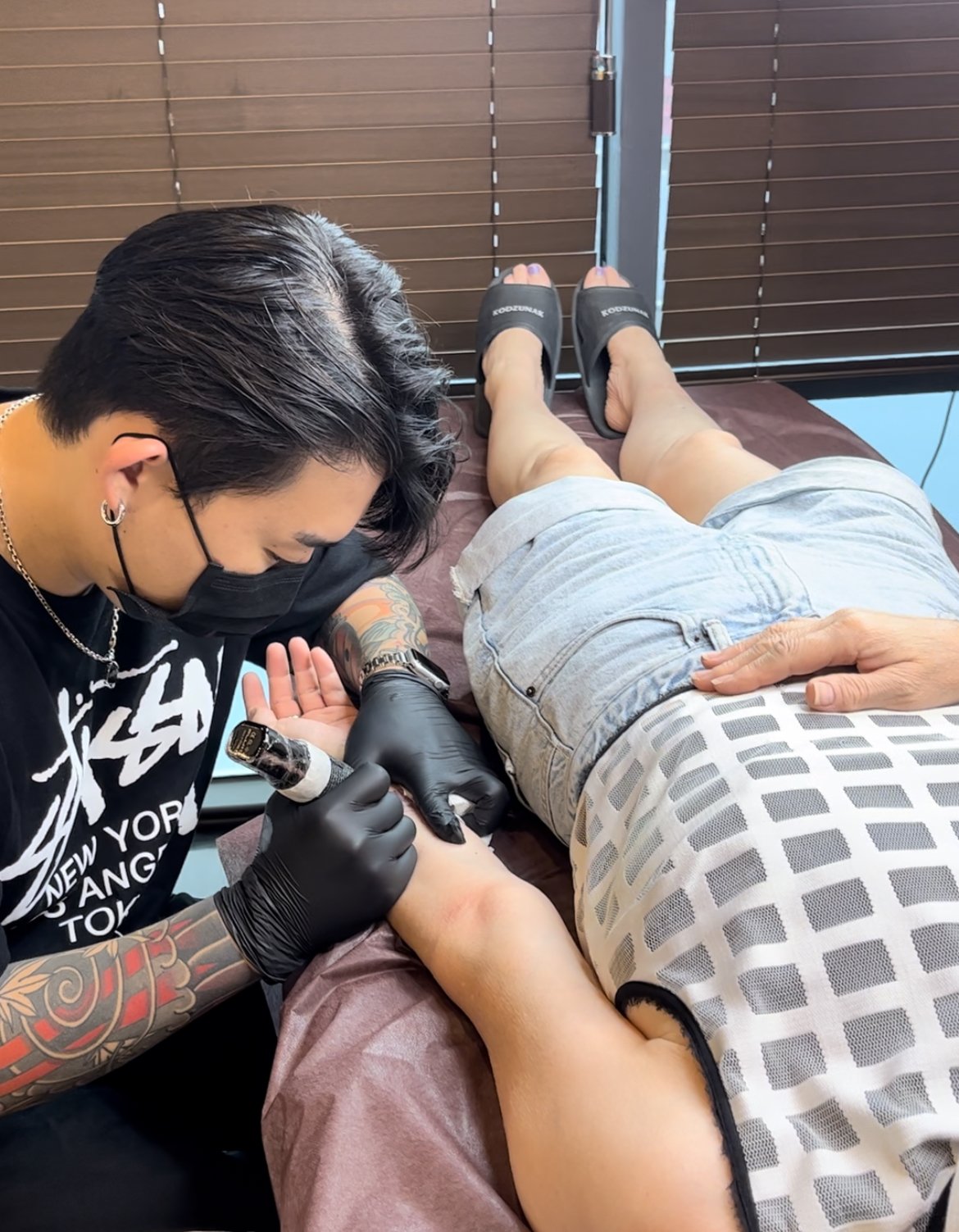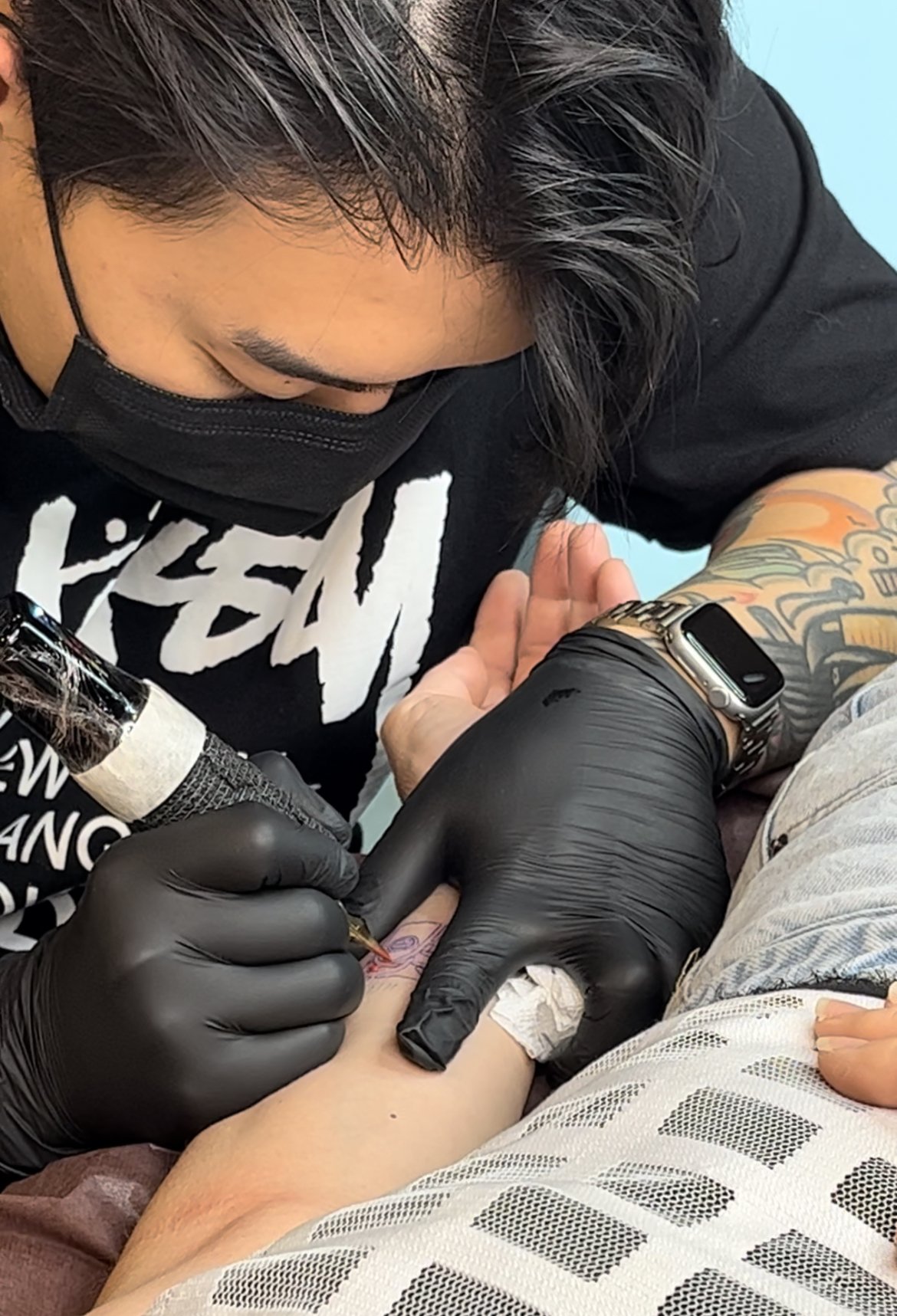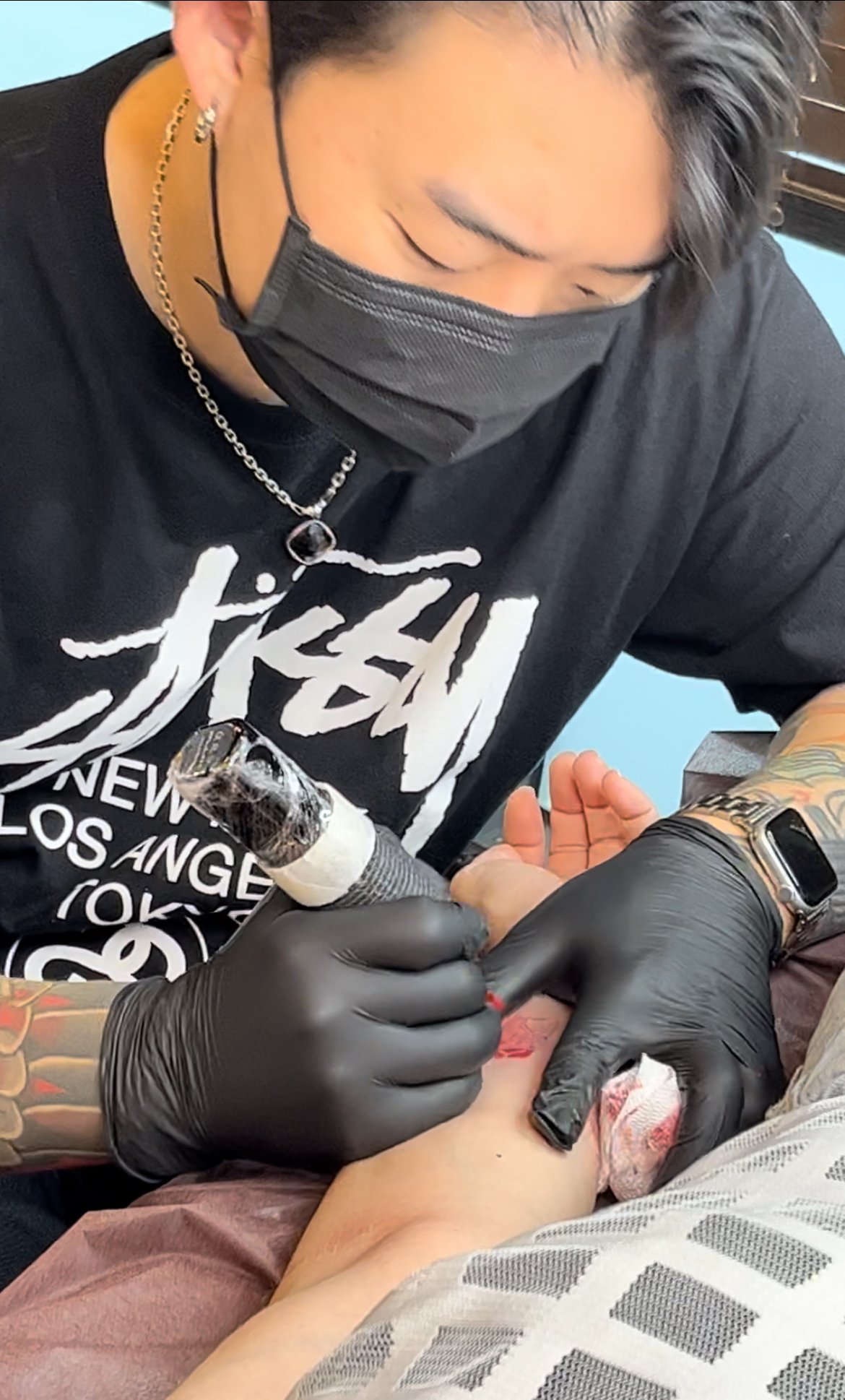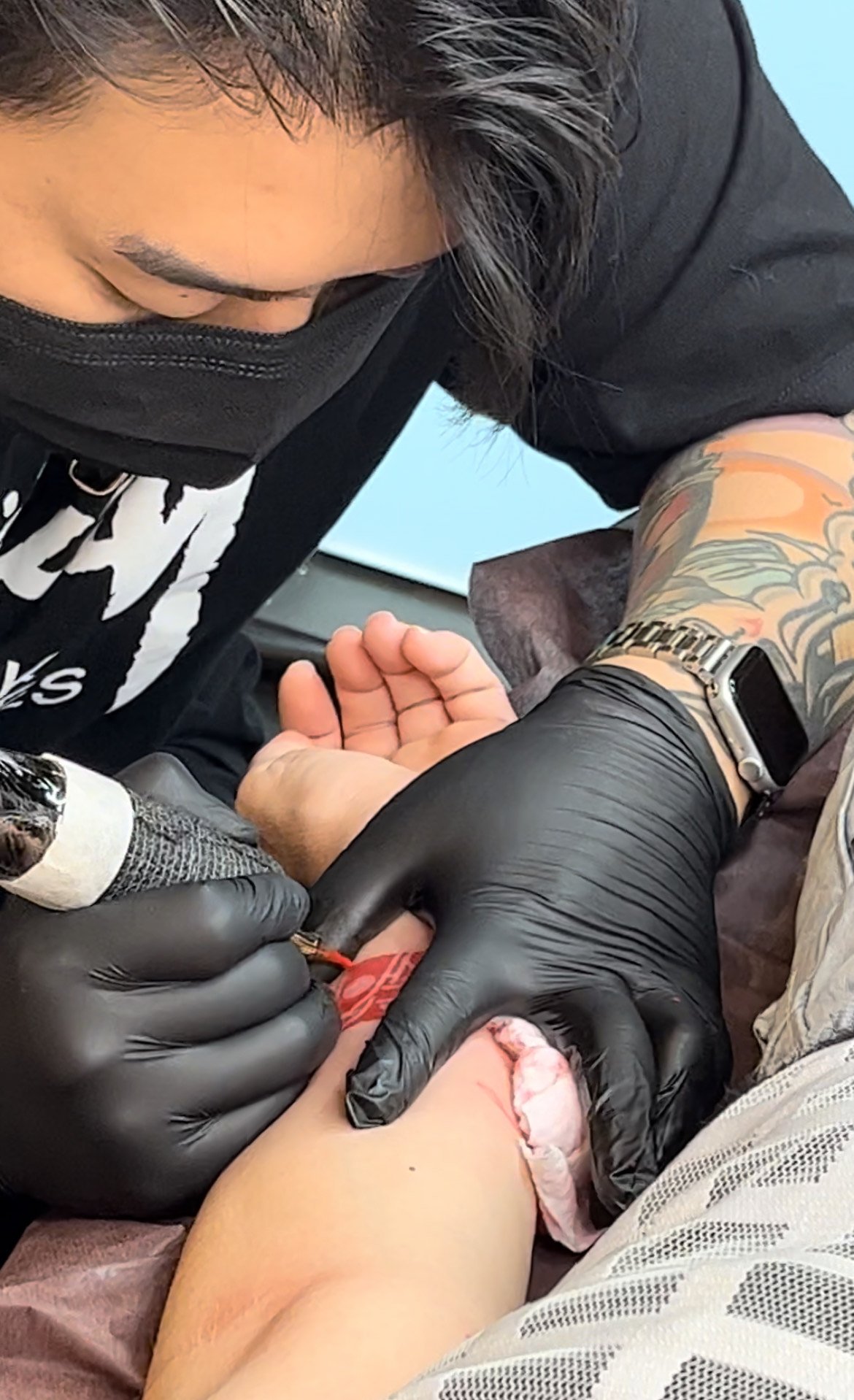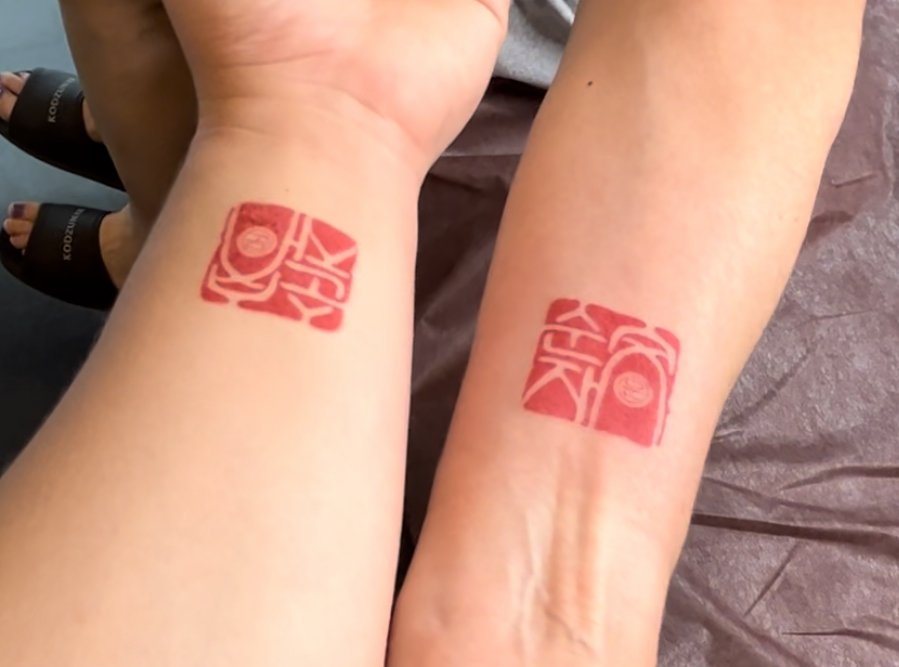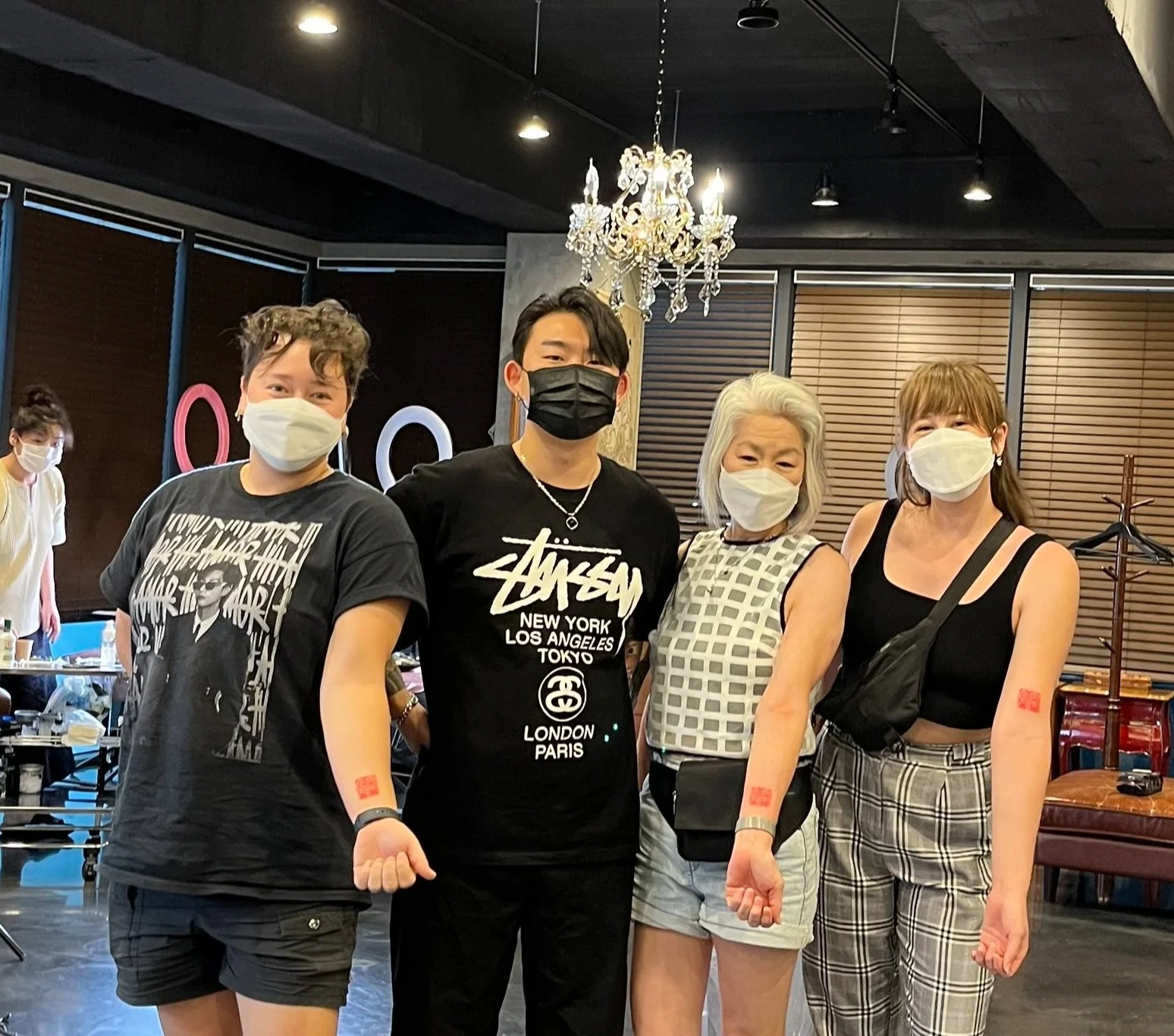My One and Only Mark in the Universe
“Would you ever be open to getting a family tattoo?” my youngest asked me a few months before our family trip to Korea. Much to their surprise, I said yes without any hesitation. I myself was surprised my kids wanted to get matching tattoos. I don’t think I’d ever considered getting a tattoo because it’s so permanent and I might regret it later on. So if we were going to do this, it had to be meaningful—which meant having it done in Korea.
Taylor has a vivid imagination that comes in handy as a writer, songwriter, and visual artist—so it made sense to assign her the task of figuring out what our family tattoo should be. If Chlo and I had been left to our own devices, we’d probably have a BTS-themed tattoo. It didn’t take long for Taylor to present a concept we all immediately thought sounded really cool. We’d recently watched the historical K-drama The Clowned Crown and she became fascinated with Korean seals—specifically with the King’s seal. During the Joseon dynasty, large golden turtle-shaped seals were used to stamp documents and letters proving authentication of the King’s orders. Seals (Injang: personal and official seals in Korea) are still used by Koreans today for authentication. The red stamp is placed next to their signatures on various documents. Taylor’s idea was to have a seal created and then use it as the design for our tattoo.
During her process of researching Korean seals, Taylor sent me an article about Choi Byung-hun that she found in the Korea Times. As it turns out, he is the only seal maker in Korea who’s been designated as a master craftsman. This master seal maker has a pretty impressive list of customers including Chairman Lee Kun-hee of Samsung Electronics and his wife Hong Ra-hee, director of the Leeum Samsung Museum of Art. According to the Korea Times story, “Choi doesn’t carve for anyone. Choi only carves seals based on individual face-to-face request.”
“The client and I tune the designs through communication. I don’t want to make something arbitrarily and have the client dislike it. Then it’s meaningless. That’s why I take orders from only those who really crave for their own unique seals. I want to bring out the best of them in that little tiny space.”
Naturally, after reading about Choi Byung-hun's passion for creating seals we wondered if there was any way to have him make ours. The article in the Korea Times was dated April 3, 2012, at which time he was 62 years old. Ten years later, would Choi still be making seals? And if he was, did we stand a chance of commissioning one? Would we be able to find him? The location mentioned in the article came up empty when I did a Google search. Through unconventional methods (and sheer determination) we were able to obtain Choi Byung-hun’s contact information. Within hours I was texting back and forth with Sajangnim (an honorific term for a boss, president, or CEO) via KakaoTalk (in a group chat with Shichan, my Korean language teacher who assisted with translating). Choi Byung-hun agreed to meet with us, so we scheduled an appointment for three days after our arrival in Korea (it can take up to two weeks to have a seal ready).
Our anticipation to meet Choi Byung-hun was through the roof. Seriously—you’d think we were about to meet BTS! Sajangnim did not disappoint. Stepping into his workshop felt like entering an elaborate museum. He has replicated many iconic seals from the Joseon period. He’s also recreated countless Korean books (like those portrayed in historical K-dramas). It was like we were getting our own private history lesson and tour of his workshop—far exceeding what we could have ever imagined. Taylor was giddy as she finally laid eyes on all the turtle seals we’d only ever seen on TV. The entire experience felt like a dream and left us in awe. Thanks to Shichan (who was translating via video chat) we were able to understand each other without any issues.
“The act of leaving your trace, a personal mark, requires prudence. Not only because that mark will last forever, but because the mark seals a legal promise. A seal is more than just a stamp. Out of the many ways of leaving your trace, this one’s special, especially when a master craftsman made you the one and only mark in the universe.”
Since I was sent to the U.S. at age one, the prospect of having a seal created felt even more meaningful given there is hardly a trace of my existence in Korea. It felt unreal—the master craftsman was going to make my one and only mark in the universe. Many Koreans have a seal displaying their name—now I would have one, too.
I told Choi Byung-hun the story of my adoption and brought what few documents I had. When asked if we wanted anything on the seal carved in English, my immediate answer was no. He began to sketch out possibilities using my Korean name. I hadn’t considered the possibility of using my name since this was a family seal and we would all have it tattooed. But Taylor and Chlo wanted to use my Korean name since we share such a strong familial bond and it’s also one of the few connections we have to our Korean heritage.
Adoptees don’t always know if any of the information we’re given is real—especially those who are first-generation Korean adoptees. Both my name and birthdate were wrong in the letter my (adoptive) parents received (it’s also incorrect on most of my legal documents including my adoption decree). In 2000 my (presumably) correct birthdate was discovered by accident after Molly Holt sent me my “records” from Holt. In early 2021, several months after I began learning to speak Korean and read Hangeul, I realized my first name had one character that had been transposed. My Korean passport and vaccination record matched the name on the original record—that’s how I knew the Romanized version written in that first letter to my parents was wrong.
Even still, both my birthdate and name could be completely made up. My family name is Moon, and many Koreans have told me they think my name is real because that name isn’t very common (unlike many made-up Korean names adoptees have been given). Might we find out someday that it’s not actually my real name? Possibly. But we decided we’d have no regrets since that would mean we’d successfully reconnected with biological relatives. Thus, the trade-off would be worth it.
We were given the choice of having our seal carved in either stone or petrified wood. Even though Sajangnim said the wood seals are nicer and wear better over time, we had our hearts set on stone because it was the style we were familiar with and reminded us of seals from the Joseon period. A stone seal would be less expensive and since we already knew commissioning the master craftsman would come with a higher price tag, it was nice to know we could get exactly what we wanted within our budget. The stone seal would be a one-inch square which we felt would be better suited to turn into a tattoo. Because this seal will remain primarily on display, wear isn’t something I am concerned about.
One document I showed Choi Byung-hun was a scrap of paper with my name written on it in Hangeul. A native Korean had written it when I was very young. It was pasted in a scrapbook for most of my life. But the character used for Moon was in Hanja (Chinese characters used to write Korean). Sajangnim began playing with different designs and ended up including both versions of Moon, with the Hangeul one sitting inside the Hanja one. It was so fascinating to watch him work out the design right in front of us.
Taylor and Chlo brought a Gwood (Korean custom) guitar along to the studio and performed a song for Choi Byung-hun. We thought it would be helpful to share another facet of their personality with him. He pulled out his phone and took a few pictures and video of them singing. He initially told us our appointment would last roughly 20 minutes but we ended up staying over 90+ minutes. We could have easily spent several more hours listening to him share his stories and work.
A week later, we were back at Sajangnim’s workshop to pick up our finished seal. Choi Byung-hun had finished it early and we couldn’t have been more thrilled with how it turned out! He had several iterations of the design drawn on parchment as well as sample stamp prints he had made of the finished seal. I asked if I could keep the drawings [if he didn’t need them] and he gladly gave them to me. It was a dream come true to meet a master craftsman, tour his studio, and have him create our seal for us.
Notice the ink being used—it’s just like what we see in Korean historical dramas!
Designing the seal…
Finalizing the design
Chasing Lovely singing Slow Dance for Choi Byung-hun
Next up: the tattoo. Taylor was also in charge of finding the tattoo artist. Tattooing is technically illegal in Korea without a medical license (aka: doctor). In spite of that, Korea is actually known for being the place to get a tattoo. There is a pretty large underground scene and it’s relatively easy to find tattoo artists.
Taylor knew what she was looking for—someone who was experienced with more traditional Korean designs as seals date back to the Goryeo kingdom 918-1392. It was also important to collaborate with an artist who regularly worked with color inks since our tattoo would be red. After much searching, Saki is the tattoo artist Taylor thought would do justice to our design. His style incorporates a lot of thick blocks of color while simultaneously fusing intricate and ornate detail. So she emailed Saki to find out if he was available while we were in Korea and if he’d be open to tattooing our seal design.
Saki gladly agreed to tattoo our seal design, so we scheduled an appointment for closer to the end of our trip so we wouldn’t have to care for a healing tattoo during our visit. Since none of us had ever gotten a tattoo before, we wanted to be mindful of the possibility of having issues with them healing—especially since our health insurance wouldn’t cover a trip to a doctor halfway around the world. We ended up scheduling three appointments back-to-back in the early afternoon on August 8th. We were flying out on the 11th, so two days would give us a little cushion if anything should come up last minute with Saki (that might cause the appointment to be pushed back). It was also a short enough period if there were any healing issues. We were determined not to leave Korea without having our tattoos complete.
On the day of our appointment, the torrential rains of monsoon season were pouring down with a vengeance. Chlo and I ducked into a local burger restaurant to grab a bite for lunch but Taylor was having the hardest time finding a vegetarian option. As she continued sloshing up and down the rainy streets of Hongdae, Chlo and I headed to the studio. I wasn’t sure what to expect, but the space was actually quite big: one large room with several beds like you might see in a clinic or spa. It was all very neat, clean, and organized—nothing like how American films portray tattoo parlors. There were a couple of other tattooists hunched over and working when we arrived.
Chlo went first. They wanted their tattoo on the inside of their wrist right above where their watch sits. Taylor wanted hers placed on her upper arm just above the inner crease of her elbow. I was 99.9% sure I wanted mine on the same spot as Chlo, but I wanted to see both tattoos finished before I made my decision.
Back when our seal was finished, I had carefully stamped it on a piece of white paper and converted it into a high-resolution digital print that Taylor emailed to Saki. We wanted the tattoo to be as close to the actual size of the seal as possible, so he printed out an example so we could see what it would look like on our arms. Once the size was confirmed he printed the design in black on special transfer paper. We were able to see exactly where the tattoo would be once the outline was transferred to our skin. We even double-checked the placement by examining it in a full-length mirror. Saki showed us a few shades of red so we could pick the exact color we wanted. We were finally ready to take the plunge!
I feel like everyone says getting a tattoo is painful. Personally, I didn’t think it felt any worse than someone writing on my arm with a vibrating pen. Chlo was surprised because they said they felt a slight burning sensation. Because of where Taylor chose to get hers, that area is a bit more sensitive than where Chlo and I put ours, but she also reported that it didn’t hurt. Each tattoo took roughly 30-45 minutes to complete.
Saki put a protective translucent covering (similar to Saniderm) over our tattoo and told us to leave it for 7-10 days. Other than that, there was zero aftercare required. It surprised me because I remember a friend having to put a gel or ointment on her tattoo and cover it with plastic wrap (which required changing a couple of times). If I recall correctly, her tattoo site was a bit painful the first couple of days. I was able to shower as usual and had zero issues for the next ten days. Once I peeled off the protective covering, I didn’t have any itching, scabbing, or peeling. The entire process was painless and smooth from beginning to end.
Six months later, I was messaging on KakaoTalk with Choi Byung-hun and he sent me a video of an interview he had done. As I watched, I was surprised to discover that my seal was featured in that interview! It only took him a week to make the seal, but he had clearly displayed it on his desk for the interview. When the host picked it up and asked about it, Sajangnim relayed my story. It’s such an honor to have this record of my seal. By the way—if anyone understands Korean—he was wrong about my age. Very wrong. ㅠ.ㅠ ㅋㅋㅋㅋㅋ
If I choose to, I can have my seal registered in Korea so it would be officially recognized as my signature. I have yet to use it as an actual stamp. It sits on a display shelf in my living room along with a decorative ink pot and the stamp prints Choi Byung-hun made.
I was recently interviewed for a podcast and asked if I taught my kids about Korea or Korean culture while they were growing up. Without hesitation, I answered no. Then I expounded. How could I? I myself wasn’t taught anything about Korea or Korean culture growing up. But we are discovering Korean culture and our roots together.
This tattoo is a constant memory of our first trip to Korea: my first time back to my home country since being adopted. It’s a symbol of how my identity has evolved. I went from wanting nothing to do with Korea to permanently having my Korean name stamped on my arm where it can’t be hidden. We all bear our family seal tattoos with pride in where we come from.
If this is my one and only mark in the universe—how apropos that it’s deeply connected to Korea.
WANT TO GO TO KOREA?
Many people put off going to Korea because planning the trip is overwhelming. I host small group tours on the most amazing trip to Korea. Travelers end the trip surrounded by new friends thinking, “I can’t believe I got to experience Korea like this.”
Email me or comment below if you’re interested in receiving tour updates.
